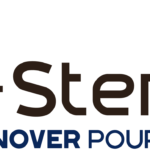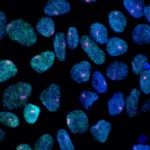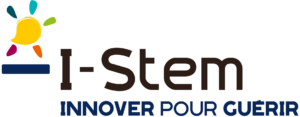The lack of pertinent models for neuromuscular disorders has rendered many important questions in disease pathogenesis inaccessible. Current drugs provide only limited benefit by alleviating certain symptoms. Clearly, the development of efficacious preventive or protective therapies is impeded by our limited knowledge of the neurobiology of these severe conditions and the lack of more faithful assay systems.
Human embryonic stem cells derived from affected embryos during a pre-implantation diagnostic (PGD), as well as the conversion of somatic cells, such as skin fibroblasts, into induced pluripotent stem cells by genetic manipulation, offer the unique opportunity to have access to a large spectrum of disease-specific cell models.
This project aims to the elaboration of new therapeutic strategies for neuromuscular diseases. Indeed, human pluripotent stem cell lines and derivatives, which express a disease-related mutated gene, represent a relevant and pertinent disease cell model to analyse pathological mechanisms through large-scale drug screenings. Consequently we highlight and investigate new therapeutic strategies.
Validating this original concept, we previously demonstrated that PGD-derived hES cells and their derivatives, which express the causal mutation implicated in the Myotonic Dystrophy type 1 (DM1), offer pertinent disease-cell models, applicable for a wide systemic mechanistic analysis ranging from functional studies at the cellular level to a large-scale drug screening. Our goal is, through the greater understanding of pathological mechanisms implicated in this disease, to identify new therapeutic strategies for this neuromuscular disease and to extend this experimental approach to other neuromuscular diseases.
Publications :
The Future of Regenerative Medicine: Cell Therapy Using Pluripotent Stem Cells and Acellular Therapies Based on Extracellular Vesicles. Jarrige M, Frank E, Herardot E, Martineau S, Darle A, Benabides M, Domingues S, Chose O, Habeler W, Lorant J, Baldeschi C, Martinat C, Monville C, Morizur L, Ben M’Barek K. 2021. Cells
Emerging Opportunities in Human Pluripotent Stem-Cells Based Assays to Explore the Diversity of Botulinum Neurotoxins as Future Therapeutics. Duchesne de Lamotte J, Perrier A, Martinat C, Nicoleau C. 2021. Int J Mol Sci.
Dynamic extrinsic pacing of the HOX clock in human axial progenitors controls motor neuron subtype specification.Mouilleau V, Vaslin C, Robert R, Gribaudo S, Nicolas N, Jarrige M, Terray A, Lesueur L, Mathis MW, Croft G, Daynac M, Rouiller-Fabre V, Wichterle H, Ribes V, Martinat C, Nedelec S. 2021. Development
SISTEMA: A large and standardized collection of transcriptome data sets for human pluripotent stem cell research. Jarrige M, Polvèche H, Carteron A, Janczarski S, Peschanski M, Auboeuf D, Martinat C. 2021. iScience
CRISPR gene editing in pluripotent stem cells reveals the function of MBNL proteins during human in vitro myogenesis. Mérien A, Tahraoui-Bories J, Cailleret M, Dupont JB, Leteur C, Polentes J, Carteron A, Polvèche H, Concordet JP, Pinset C, Jarrige M, Furling D, Martinat C. 2021. Hum Mol Genet
Human iPSC-derived neurons reveal early developmental alteration of neurite outgrowth in the late-occurring neurodegenerative Wolfram syndrome. Pourtoy-Brasselet S, Sciauvaud A, Boza-Moran MG, Cailleret M, Jarrige M, Polvèche H, Polentes J, Chevet E, Martinat C, Peschanski M, Aubry L. 2021. Am J Hum Genet.
Optogenetically controlled human functional motor endplate for testing botulinum neurotoxins. de Lamotte JD, Polentes J, Roussange F, Lesueur L, Feurgard P, Perrier A, Nicoleau C, Martinat C. 2021. Stem Cell Res Ther.
Human cytomegalovirus infection is associated with increased expression of the lissencephaly gene PAFAH1B1 encoding LIS1 in neural stem cells and congenitally infected brains. Rolland M, Martin H, Bergamelli M, Sellier Y, Bessières B, Aziza J, Benchoua A, Leruez-Ville M, Gonzalez-Dunia D, Chavanas S. 2021. J Pathol
Contribution of Human Pluripotent Stem Cell-Based Models to Drug Discovery for Neurological Disorders. Benchoua A, Lasbareilles M, Tournois J. 2021. Cells
Deciphering DSC2 arrhythmogenic cardiomyopathy electrical instability: From ion channels to ECG and tailored drug therapy. Moreau A, Reisqs JB, Delanoe-Ayari H, Pierre M, Janin A, Deliniere A, Bessière F, Meli AC, Charrabi A, Lafont E, Valla C, Bauer D, Morel E, Gache V, Millat G, Nissan X, Faucherre A, Jopling C, Richard S, Mejat A, Chevalier P. 2021. Clin Transl Med.
Induced pluripotent stem cell-derived vascular networks to screen nano-bio interactions. Estronca L, Francisco V, Pitrez P, Honório I, Carvalho L, Vazão H, Blersch J, Rai A, Nissan X, Simon U, Grãos M, Saúde L, Ferreira L. 2021. Nanoscale Horiz.
Hutchinson-Gilford progeria syndrome: Rejuvenating old drugs to fight accelerated ageing. Guilbert SM, Cardoso D, Lévy N, Muchir A, Nissan X. 2021. Methods
AAV2/9-mediated silencing of PMP22 prevents the development of pathological features in a rat model of Charcot-Marie-Tooth disease 1 A. Gautier B, Hajjar H, Soares S, Berthelot J, Deck M, Abbou S, Campbell G, Ceprian M, Gonzalez S, Fovet CM, Schütza V, Jouvenel A, Rivat C, Zerah M, François V, Le Guiner C, Aubourg P, Fledrich R, Tricaud N. 2021. Nat Com



